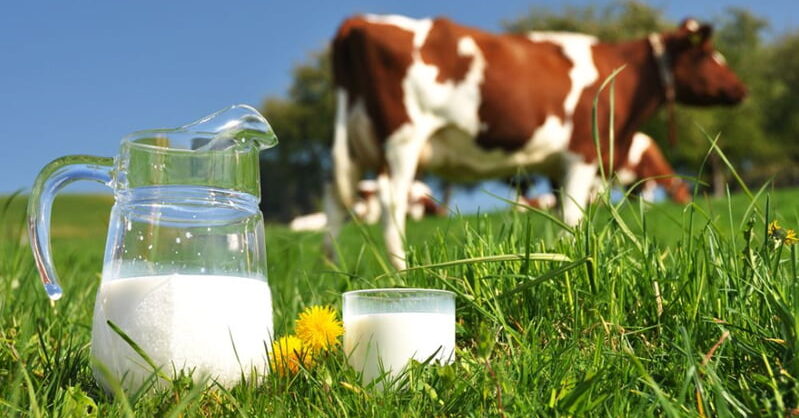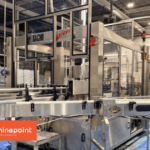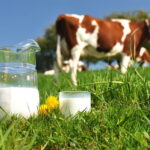At MachinePoint, we specialize in automating and supplying lines for milk processing and production. If you need to automate, expand, or start a milk production line, please contact us.
The quality of equipment and facility design is key to ensuring the quality of the final product and process hygiene. Each country has its own regulations for milk production, and it is mandatory to have facilities that comply with these regulations.
Milk is produced daily by farmers and brought to dairy processing centers for processing. Various types of packaging are used for milk, including cartons, PET bottles, glass, or bags.
Milk can be processed into different types based on the chosen process:
- Pasteurized milk
- UHT milk
- ESL (Extended Shelf Life) milk
- Whole, skimmed, semi-skimmed milk
- Condensed milk
Our mission is to provide our customers with comprehensive solutions, from single machines to complete production lines. MachinePoint assists and supports you throughout the machinery selection, installation, startup, and initial operation period. Our scope of services is extensive, covering everything from constructing an entire plant to modifying an existing facility, whether for expansion, conversion, or modernization.
We sell used machinery, complete plants, and processes for the production of the following dairy products:
- Pasteurized, sterilized, and UHT milk
- Cream: pasteurized or prepared to customer specifications
- Butter
- Fermented milk-based products: yogurt, kefir, etc.
- Casein, whey, and other derivatives
The technologies used for milk processing can be aseptic, ultra-clean, pasteurization, UHT, or other thermal treatments, leading to varying shelf lives for milk. For example, pasteurization results in milk that must be refrigerated and has a short shelf life of a few days, while UHT processing and aseptic packaging yield milk with a shelf life of months.
Components within a milk processing line, such as valves, pumps, filling, packaging, storage, and sterilization technologies, all significantly impact the final product.
Milk processing can be generally described as follows. It’s important to note that many dairy processing centers also produce other dairy products like cheese, cream, yogurt, butter, etc.

Milk and other dairy product processing
Milk
Once the fat content in the milk has been standardized to the desired level, it is essential to thermally treat the product to ensure its quality and shelf life.
Pasteurization and UHT sterilization are the two main processes widely accepted in the market to process milk and extend its shelf life, making it easier to distribute and market.
Cream
Cream is a component of milk primarily composed of fat. In traditional production, cream is separated from fresh milk by removing the upper layer that forms after a period of rest when the milk has not been homogenized. In industrial cream production, this process is accelerated using centrifuges to separate cream from milk, leaving skimmed milk.
Industrial cream production also involves pasteurization, separation, standardization, and homogenization.
Yogurt and Fermented Products
Yogurt is obtained through the interaction of lactic acids and milk proteins during fermentation. Its production begins with milk standardization to achieve the desired total solids and fat content. This mixture is then pasteurized to eliminate pathogenic bacteria and ensure a stable solution.
After these two stages, the mixture is cooled to add cultures. Fermentation can occur in large tanks or individual containers. Depending on the desired product, fruits, flavors, or other additives can be introduced during production.
Flavored Milk
Flavored milk is a beverage made from milk, sugar, and flavors. It is highly regarded in specific market niches where manufacturers aim for differentiation through unique milk recipes and other substances. Flavored milk must be standardized, pasteurized, and homogenized. Mixing milk and various recipe components can occur either in batch or continuous systems, followed by filling and packaging.
Milk Reception Systems
Since milk is produced daily and delivered to processing centers daily, it must be stored for hours or days until processing. In milk reception systems, milk is analyzed, tested, and undergoes initial pasteurization. Then, it is cooled and stored at low temperatures. MachinePoint provides milk reception systems.
Milk Storage Systems
Milk can be directly processed from the reception system or stored. It can also be stored in tanks or silos at various stages of processing. These intermediate process tanks are automated and integrated with the processing line. Aseptic storage is necessary for aseptic milk processing. MachinePoint supplies both regular and aseptic milk storage systems, ranging from basic, manually controlled systems to fully automated setups, combined with CIP (Clean-in-Place) systems and sterilization units. Please check our aseptic storage and processing systems.
CIP or SIP
These systems are essential to ensure process cleanliness and hygiene, which is critical for the quality of milk. MachinePoint Engineering manufactures and supplies CIP and SIP systems.
Milk Sterilization
Milk sterilization involves reducing the microorganisms in milk to extend its shelf life. Several methods are used for milk sterilization, including UHT (Ultra High Temperature), HTST (High-Temperature Short-Time), pasteurization, and filtration. The choice of method depends on the type of milk desired. For instance, pasteurization is used for fresh milk, while UHT or filtration technologies are employed for ESL (Extended Shelf Life) milk. The majority of milk distributed today is UHT or HTST processed.
Cream Separation Process
The fat content of raw milk varies depending on the cow’s breed, diet, age, milking times, etc. This is why milk undergoes a standardization process, where raw, pasteurized, or sterilized milk is separated into cream to obtain skimmed milk. A portion of the cream is then added back to the skimmed milk in precise proportions to accurately define the milk’s fat content for commercial purposes.
The remaining cream is processed to make products such as cream, condensed milk, butter, etc., using technologies like evaporation, mixing, and drying.
Milk Mixing Systems
Milk can be enriched with vitamins, calcium, or other ingredients, which are blended into the milk using batch or continuous mixing systems.
Homogenization
Homogenization is carried out using machines called homogenizers to prevent cream separation from the rest of the liquid when milk is stored.

Milk processing used equipment: MachinePoint, your expert supplier
Milk Filling and Packaging Once processing is complete, milk proceeds to the filling and packaging process. The beverage can be packaged in various types of containers, including cartons, glass, bags, PET bottles, and more. Sterilized milk intended for an extended shelf life must be filled and packaged in an aseptic manner. MachinePoint Engineering provides integrated milk filling and packaging lines, including aseptic packaging.
In general, a milk processing line can include the following equipment:
- Milk Reception Systems: In this stage, raw milk is received from producers and undergoes quality and safety checks. This may include weighing and sampling systems.
- Storage Systems: Milk is stored in stainless steel tanks to maintain proper temperatures and ensure it is readily available for processing. The tank sizes can vary based on the plant’s capacity.
- Mixing Systems: These are used to combine additional ingredients such as milk solids, sugars, or flavors into the milk, which is essential for producing specific products like yogurt or flavored milk.
- Cream Separators: These machines separate fat from milk to produce skimmed milk and cream, allowing control over the fat content in the final products.
- CIP/SIP (Cleaning in Place/Sterilization in Place): These systems are critical for maintaining hygiene in the plant. CIP is used to clean equipment without disassembly, while SIP is employed to sterilize equipment at high temperatures to ensure product safety.
- UHT, Pasteurizers, and Filtration Systems: These equipment units heat and sterilize milk at different temperatures, depending on the final product. Pasteurization is used to eliminate harmful microorganisms, while Ultra High Temperature (UHT) technology provides extended shelf life without the need for refrigeration.
- Heat Exchangers: These are used to heat or cool milk during the pasteurization and UHT process, optimizing energy efficiency.
- Homogenizers: These devices reduce the size of fat particles in milk, resulting in a uniform texture and preventing fat separation in products like milk.
- Deaeration: It is used to remove unwanted air and gases from milk, enhancing the quality and shelf life of dairy products.
- Drying and Concentration Technologies: These systems are used for producing milk powder and other concentrated products by removing excess water.
- Evaporators: They are used to concentrate milk by removing water and obtaining products like condensed milk.
- Filtration Technologies: These systems allow the removal of unwanted particles to ensure product quality.
- Aseptic Filling and Packaging: The final product is packaged in sterile containers to maintain its quality and safety. Aseptic systems prevent microbiological contamination.






